| Author: | André Rusakow |
|---|---|
| Views Total: | 1,189 views |
| Official Page: | Go to website |
| Last Update: | March 30, 2021 |
| License: | MIT |
Preview:

Description:
A vanilla JavaScript implementation of Material Design-inspired tabs component with click ripple effect and sliding active menu indicator.
How to use it:
1. Create a tab bar UI from a nav.
<nav class="tabs-box">
<div aria-label="simple tabs example" class="tabs-menu js-tabs-menu" role="tablist">
<button class="tab-button js-tab-button" type="button" role="tab">
<span class="tab-button__content">CSS</span>
</button>
<button class="tab-button js-tab-button" type="button" role="tab">
<span class="tab-button__content">Script</span>
</button>
<button class="tab-button js-tab-button" type="button" role="tab">
<span class="tab-button__content">.Com</span>
</button>
<span class="tab-indicator js-tab-indicator"></span>
</div>
</nav>2. The necessary CSS/CSS3 styles.
:root {
--primary-color: #3498DB;
--accent-color: #E74C3C;
--grey-700-color: #423f3f;
--grey-900-color: #333333;
--base-spacing: 8px;
--font-m: 14px;
--shadow-small: 0px 2px 4px -1px rgb(0 0 0 / 20%), 0px 4px 5px 0px rgb(0 0 0 / 14%), 0px 1px 10px 0px rgb(0 0 0 / 12%);
}
.tabs-box {
display: flex;
justify-content: center;
max-width: 640px;
height: 48px;
width: 100%;
background-color: var(--primary-color);
box-shadow: var(--shadow-small);
border-top-left-radius: 3px;
border-top-right-radius: 3px;
}
.tabs-menu {
display: flex;
justify-content: center;
position: relative;
}
.tab-button {
display: flex;
justify-content: center;
align-items: center;
border: none;
position: relative;
overflow: hidden;
font-weight: 500;
font-size: var(--font-m);
color: #fff;
text-transform: uppercase;
letter-spacing: 0.02857em;
white-space: normal;
letter-spacing: 0.02857em;
background-color: transparent;
padding: var(--base-spacing) calc(var(--base-spacing) * 2);
cursor: pointer;
transition: color 250ms ease-in;
}
.tab-button .active {
color: var(--grey-700);
}
.tab-button__content {
display: block;
pointer-events: none;
}
.tab-button:hover,
.tab-button:focus {
outline: none;
color: var(--grey-700)
}
.tab-indicator {
background-color: var(--accent-color);
height: 3px;
position: absolute;
left: 0;
bottom: 0;
transition: left 250ms ease-in-out, width 650ms ease-in-out;
}
.tab-button__ripple {
position: absolute;
background-color: black;
transform: translate(-50%, -50%);
border-radius: 50%;
animation: ripple 1000ms linear infinite;
pointer-events: none;
}
.focus::after {
content: '';
position: absolute;
background-color: black;
opacity: .2;
border-radius: 50%;
width: 80%;
height: auto;
padding-top: 80%;
background: black;
transition: transform 300ms ease-in-out;
transform: scale(0);
animation: focusRipple 300ms linear infinite, focusPulse 1700ms linear 300ms infinite;
}
@keyframes ripple {
0% {
width: 0;
height: 0;
opacity: .4;
}
100% {
width: 500px;
height: 500px;
opacity: 0;
}
}
@keyframes focusRipple {
0% {
transform: scale(0);
}
100% {
transform: scale(1);
}
}
@keyframes focusPulse {
0%, 100% {
transform: scale(1);
}
50% {
transform: scale(1.1);
}
}3. The main JavaScript to enable the tab bar.
const ACTIVE_CLASS = 'active'
const tabItems = document.querySelectorAll('.js-tab-button');
const indicator = document.querySelector('.js-tab-indicator');
const tabsMenu = document.querySelector('.js-tabs-menu');
const indicatorPosition = tabItems[0].getBoundingClientRect().left - tabsMenu.getBoundingClientRect().left;
indicator.style.width = `${tabItems[0].clientWidth}px`;
tabItems.forEach(tab => {
tab.setAttribute('aria-selected', 'false');
tab.addEventListener('click', (e) => {
handleTabSelection(e);
const current = document.querySelector(`.focus`);
if(current) {
current.className = current.className.replace(` focus`, '');
}
})
tab.addEventListener('mousedown', handleRippleEffect);
tab.addEventListener('keydown', handleArrowKeysFocus);
});
function handleTabSelection(e) {
toggleActiveClass(e);
moveTabIndicator(e);
handleA11y(e);
}
function toggleActiveClass(e) {
const current = document.querySelector(`.${ACTIVE_CLASS}`);
if(current) {
current.className = current.className.replace(` ${ACTIVE_CLASS}`, '');
}
e.target.className += ` ${ACTIVE_CLASS}`;
}
function toggleFocusClass(e) {
const current = document.querySelector(`.focus`);
if(current) {
current.className = current.className.replace(` focus`, '');
}
e.currentTarget.className += ` focus`;
}
function moveTabIndicator(e) {
const indicatorPosition = e.target.getBoundingClientRect().left - tabsMenu.getBoundingClientRect().left;
indicator.style.width = `${e.target.clientWidth}px`;
indicator.style.left = `${indicatorPosition}px`;
}
function handleRippleEffect(e) {
const posX = e.target.offsetLeft;
const posY = e.target.offsetTop;
const span = document.createElement('span');
const x = e.pageX - e.target.getBoundingClientRect().left;
const y = e.pageY - e.target.getBoundingClientRect().top;
span.classList.add('tab-button__ripple');
e.target.appendChild(span);
span.style.left = `${x}px`;
span.style.top = `${y}px`;
setTimeout(() => {
span.remove();
}, 1000);
}
function handleA11y(e) {
tabItems.forEach(tab => {
const addActiveFocus = () => {
e.target.setAttribute('aria-selected', 'true')
e.target.setAttribute('tabindex', '0');
};
const removeActiveFocus = () => {
tab.setAttribute('aria-selected', 'false');
tab.setAttribute('tabindex', '-1');
};
tab === e.target ? addActiveFocus() : removeActiveFocus();
});
}
function handleArrowKeysFocus(e) {
const totalTabItems = tabItems.length - 1;
const leftArrowKey = e.which === 37;
const rightArrowKey = e.which === 39;
let index = Array.prototype.indexOf.call(tabItems, e.currentTarget);
let newIndex;
const decrementIndex = () => {
newIndex = index - 1;
if (newIndex < 0) {
newIndex = totalTabItems;
}
}
const incrementIndex = () => {
newIndex = index + 1;
if (newIndex > totalTabItems) {
newIndex = 0;
}
}
if (leftArrowKey) {
decrementIndex();
toggleFocusClass(e);
}
if (rightArrowKey) {
incrementIndex();
toggleFocusClass(e);
}
const current = document.querySelector(`.focus`);
if(current) {
current.className = current.className.replace(` focus`, '');
}
if (tabItems[newIndex]) {
tabItems[newIndex].className += ` focus`;
tabItems[newIndex].focus();
}
}
// Initially activate the first tab
tabItems[0].setAttribute('tabindex', '0');
tabItems[0].setAttribute('aria-selected', 'true');





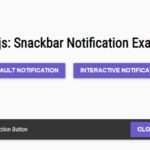
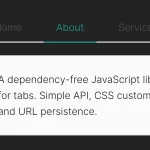
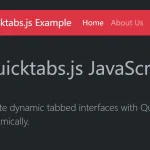
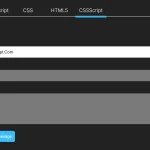
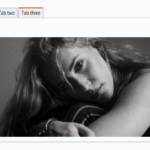
How do I put the indicator where I want it?